11: Join the crafts fiesta in Oaxaca
Visit Mexico’s south if you love textiles, art, or Day of the Dead.
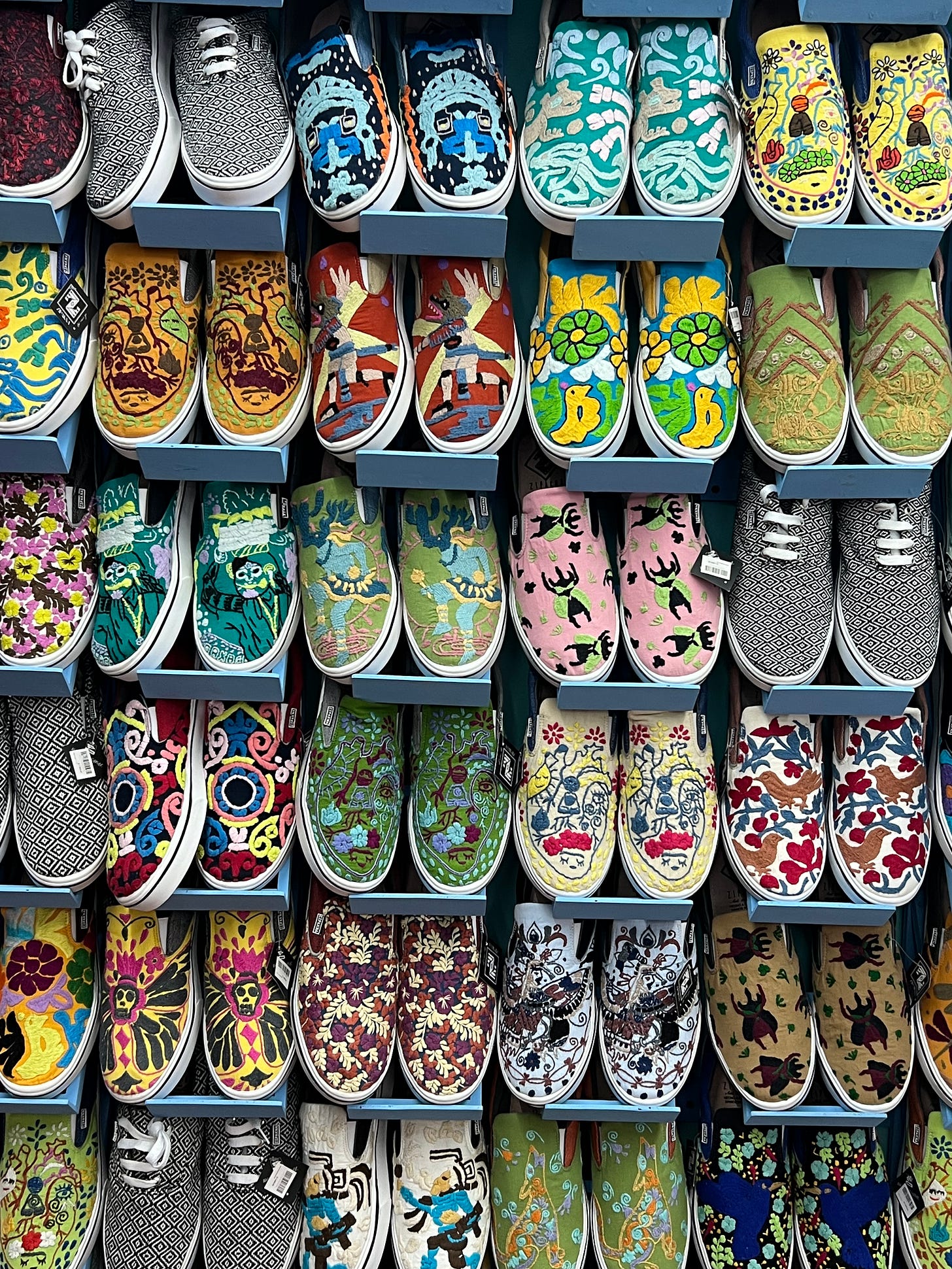
It’s a truth universally acknowledged that a traveler who digs crafts and food must one day visit Oaxaca. My husband C and I just returned from a week in the southern Mexican city (and state). We were charmed by its Spanish colonial architecture, indigenous foodways (olé, moles!), and Mesoamerican mountaintop pyramids.
Fiestas pop up on every corner in Oaxaca: rumba bands in the zocalo, wedding processions with giant papier-maché puppets in the streets, masked pageants veering between religious rites and riotous celebrations outside churches.
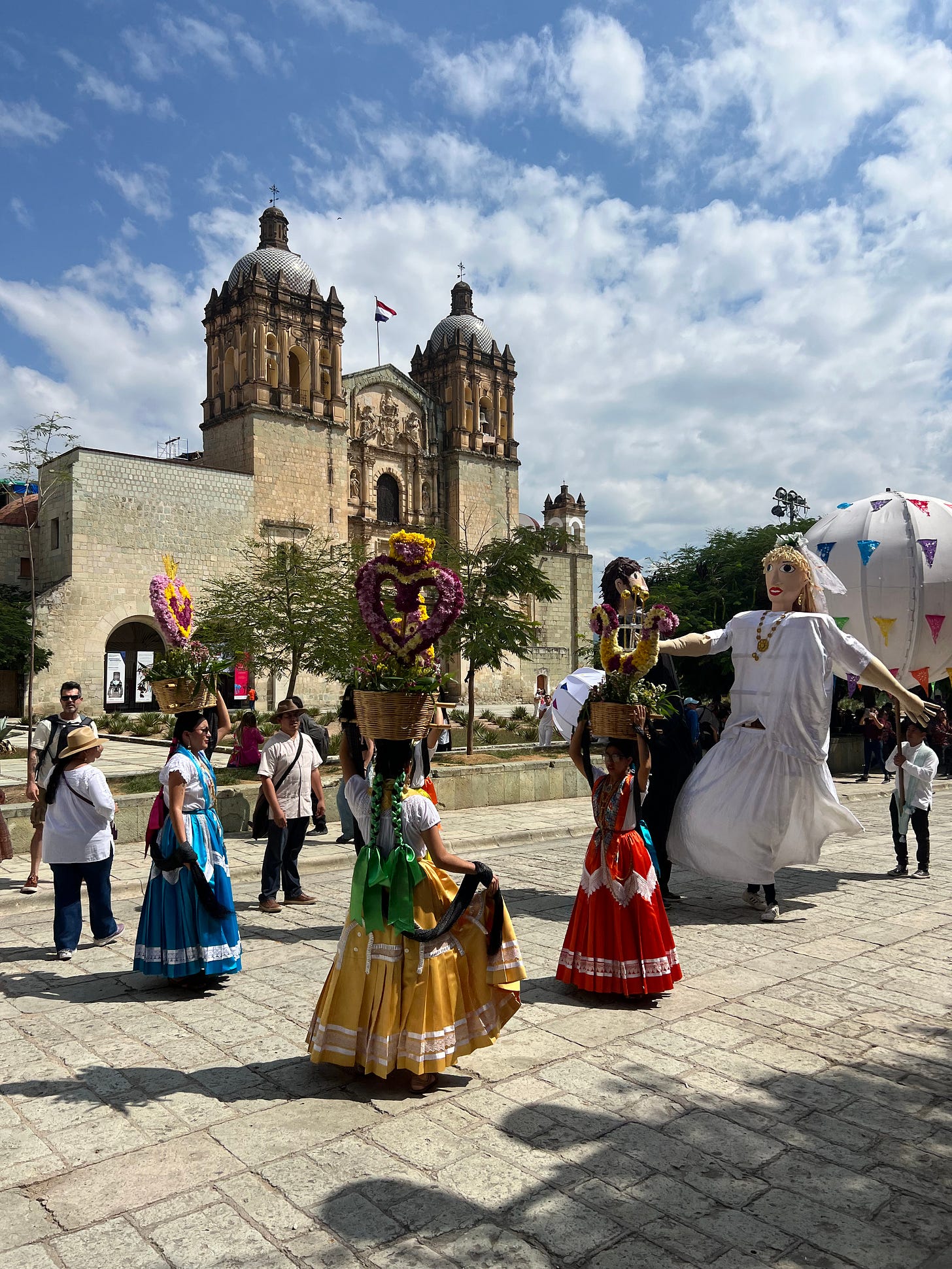
The crafts and shopping in Oaxaca also bring the party. Seeing locals creating traditional goods or new, edgy art—and being paid fairly for it—makes shopping imbued with meaning. “Going to a crafts workshop, meeting the family who weaves wool rugs or shapes Oaxacan black pottery brings an understanding of how long these traditional arts take to do,” say Gabriel Sánchez, the Oaxaca-born tour guide who took us to several crafts villages just outside the city. “Plus meeting the artist gives you an emotional connection to anything you purchase.”
Here’s what C. and I saw—and bought—in the craftiest, artiest part of Mexico.
Zapotec carpets
In the mountain-framed farm country southeast of Oaxaca City, agave plants (spiked like the skulls of punk rockers) fuel mezcal tasting rooms and fields of sheep power a centuries-old carpet crafting tradition. Small workrooms in the tiny town of Teotitlán del Valle feature artisans at work dyeing, spinning, and weaving rugs in patterns inspired by the surrounding peaks and the traditions of the Zapotec people (who built nearby Monte Alban).
We stopped at Nelson Perez Weavers, a fifth generation business, where you can help color the wool with vegetable dyes (cochineal bugs, which grow on cactus, make red!). “People love to see how rug makers create natural dyes,” says Sánchez. We bought a small gray and white rug for my mother-in-law’s mountain house.
Nearby, Dixza weaves traditional rugs and hosts guests for daylong or weeklong crafting retreats in an onsite Airbnb.
Black pottery
For thousands of years, Oaxaca’s Zapotec people have been gathering mud-colored clay from nearby Sierra Madre mountains. Via the heat and smoke of kilns in the town of San Bartolo Coyotepec, they transform these hunks of earth into shiny, black Barro Negro or “pottery of the night.”
We visited Dona Rosa Studio, run by descendants of a female artisan who commercialized the technique in the early 20th century. We bought luminous Day of the Dead skulls and decorative hearts to give to friends. You can also find Barro Negro at downtown Oaxaca shops; just have it wrapped carefully for shipping or schlepping.
Wood-block prints
The art in Oaxaca isn’t all rooted in age-old traditions. A buzzing print scene has filled the city since the late 2010s, spurred by political protests and social justice causes. Colectivo Subterránea’s black-and-white, life-sized woodcut prints of skull-faced women, Emiliano Zapata, and mythical beings plaster candy-colored walls around town. Buy T-shirts and artworks—or take classes—at the group’s indoor-outdoor studio, one of a dozen print shops in town; discover more @pasaportegrafico.
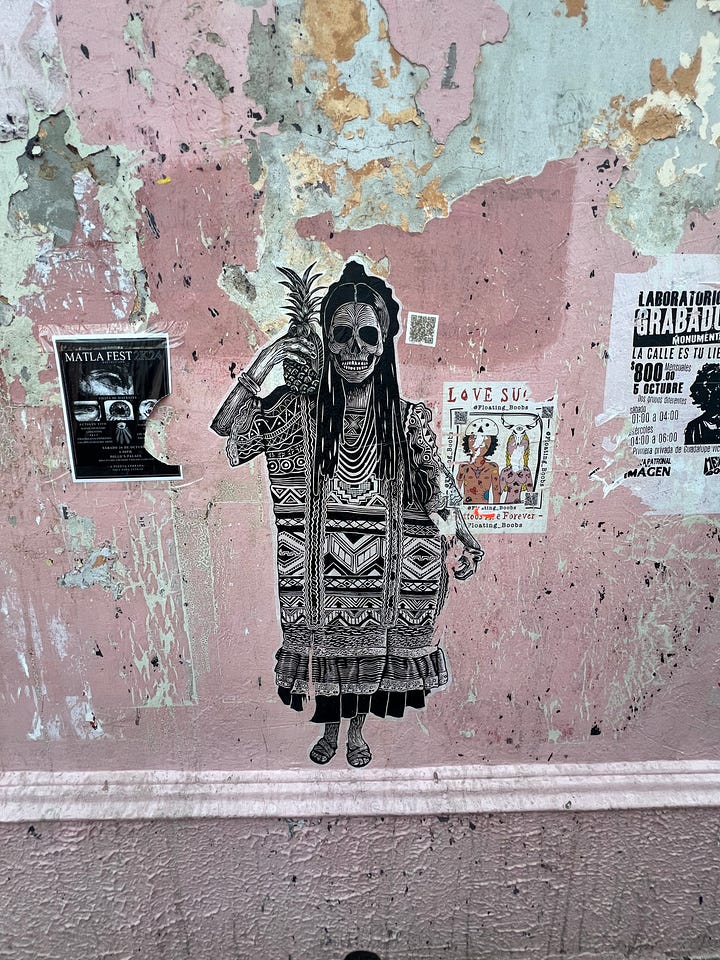
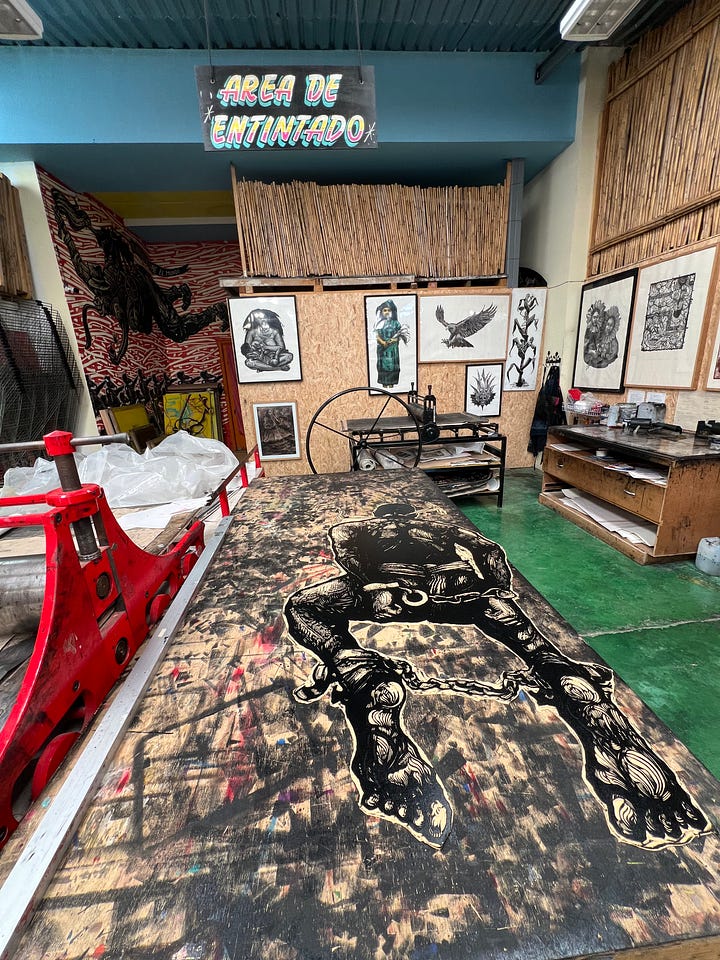
Fiesta-ready fashion
Oaxaca’s weaving and embroidery producers fuel the production of both traditional garments and edgy pieces. We found clothing in boutiques, artists’ cooperatives, and stalls in the Mercado de Artesanas at the southern tip of Oaxaca’s historic center. I picked up a handwoven shift dress at Mariana Grapain’s snug gallery and a sweatshirt embroidered with a striped snake by Nana Mintsita at Marías Arte & Diseño shop.
I was tempted by the freaky fur sandals at many shops. There were also huipiles (traditional woven blouses) and full skirts at Los Baúles de Juana Cata and at the Museo Textile de Oaxaca museum boutique. My cousin’s new baby daughter will soon be wearing a striped cotton frock from Huizache, a downtown co-op with multiple makers under one roof.
Textiles for the home
Oaxaca turns out bright cotton textiles, often with fringe or abstract patterns. We saw them made into bedspreads, napkins, and pillow covers at shops like Casa Bíini and La Casa de Las Artesanias de Oaxaca. We purchased nubby cotton napkins and bright hand towels to give as gifts, plus a rainbow-striped tablecloth (about $80) for our ginormous dining table.
Carved mythical animals
A purple and neon yellow rabbit with a green snail’s tail. A skull-faced dragon-coyote hybrid painted in ice-cream-cone pastels. Alebrijes, fantastical wooden sculptures drawing on Zapotec folklore and artistic license, headline at dozens of family-run studios in San Martín Tilcajete, a town about a 30-minute drive from Oaxaca City.
We watched artisans carve, paint, and finish whimsical beasts at the Jacobo and Maria Angeles Workshop. After asking my birthday, our guide informed me I was a coyote-rabbit spirit. I believed him, but not enough to buy a totem that mashed up the two. (Still, there were more chances to score the carvings at shops back in Oaxaca).
Day of the Dead Décor
November 1 and 2, Oaxaca’s squares, cobbled streets, and cemeteries come to life with papier-mâche skeletons, heaps of orange marigolds, and other decorations marking Dia de los Muertos. Stores in Oaxaca’s Centro (including La Casa de Las Artesanias) traffic in the surprisingly jolly looking calacas (skeletons) and other décor. I picked up a few colorful, doll-sized skellies.
I also scored six rainbow-hued papel picado paper banners with grinning skulls for about $12 at Miguel Fiestas, a sort of Mexican Party City. They’ll set the scene for our Day of the Dead dinner party next weekend.





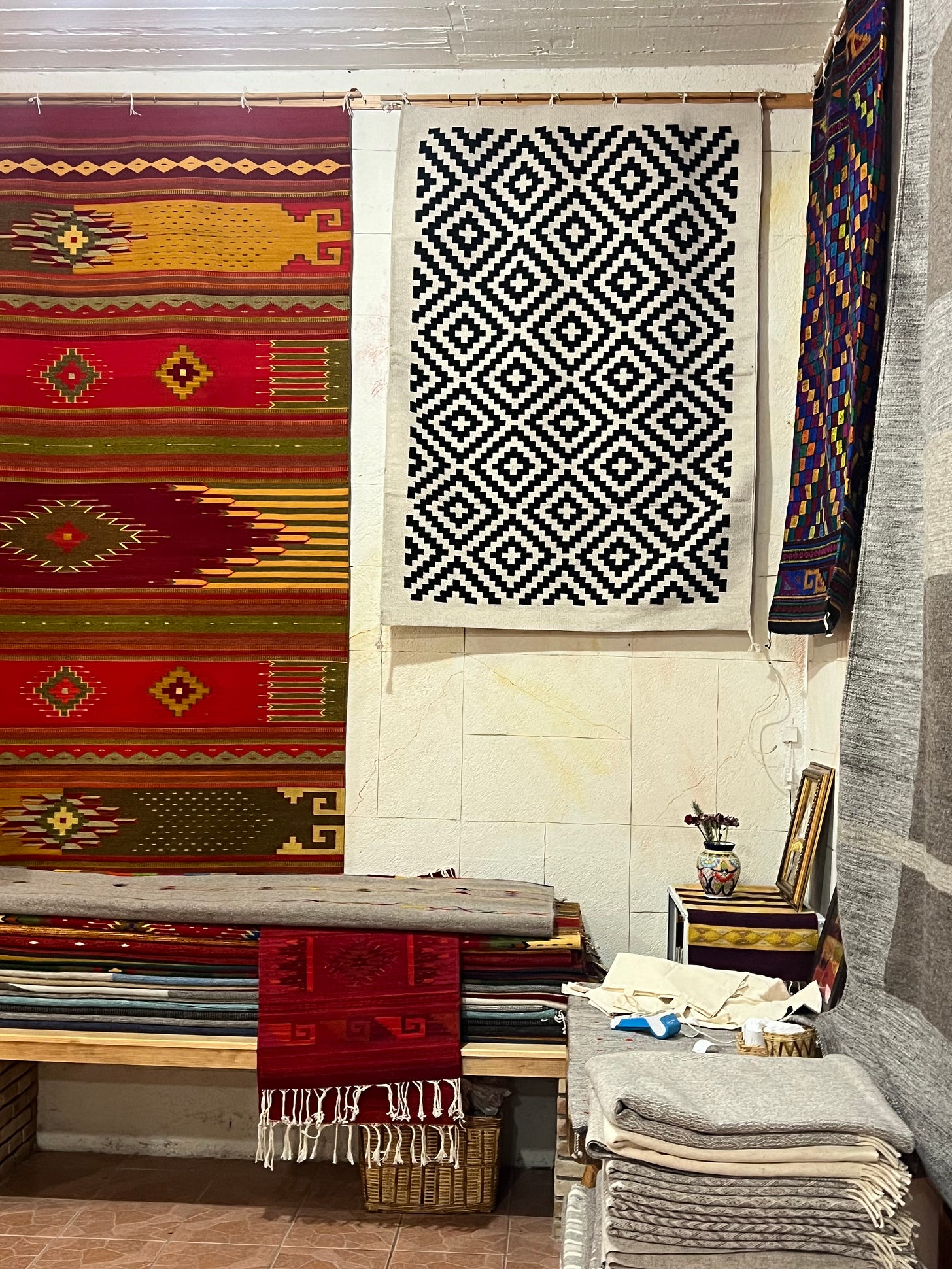
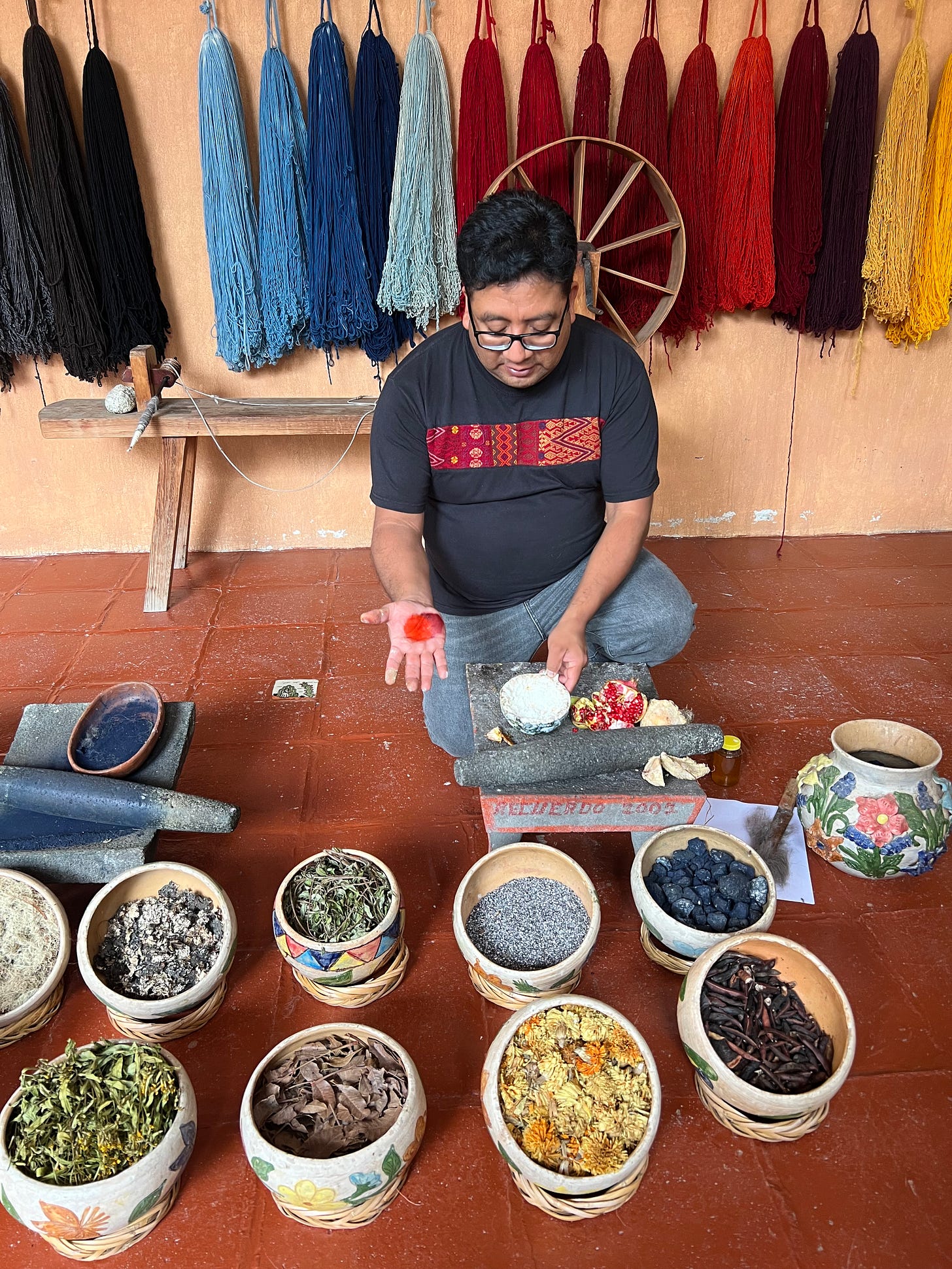
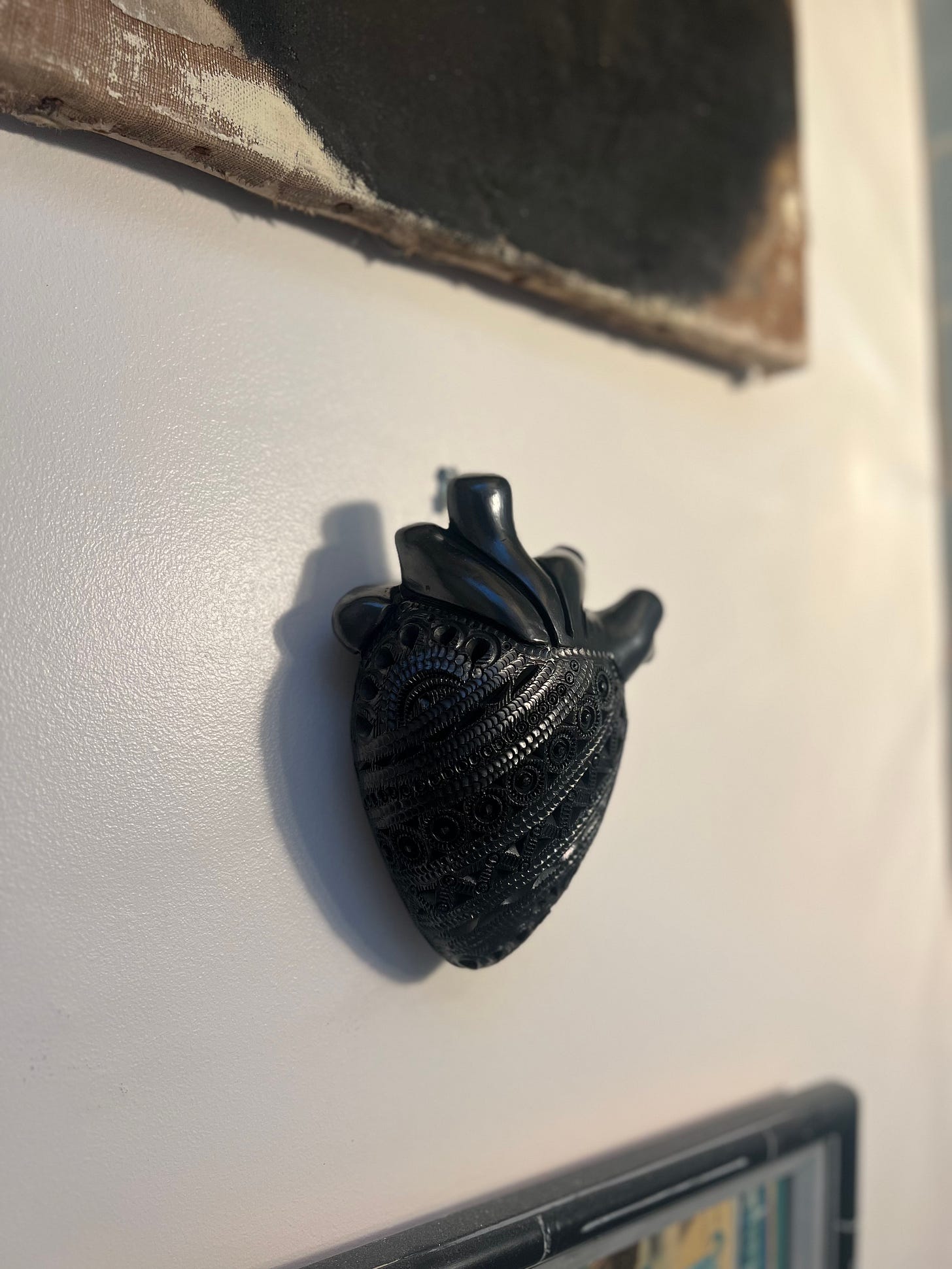
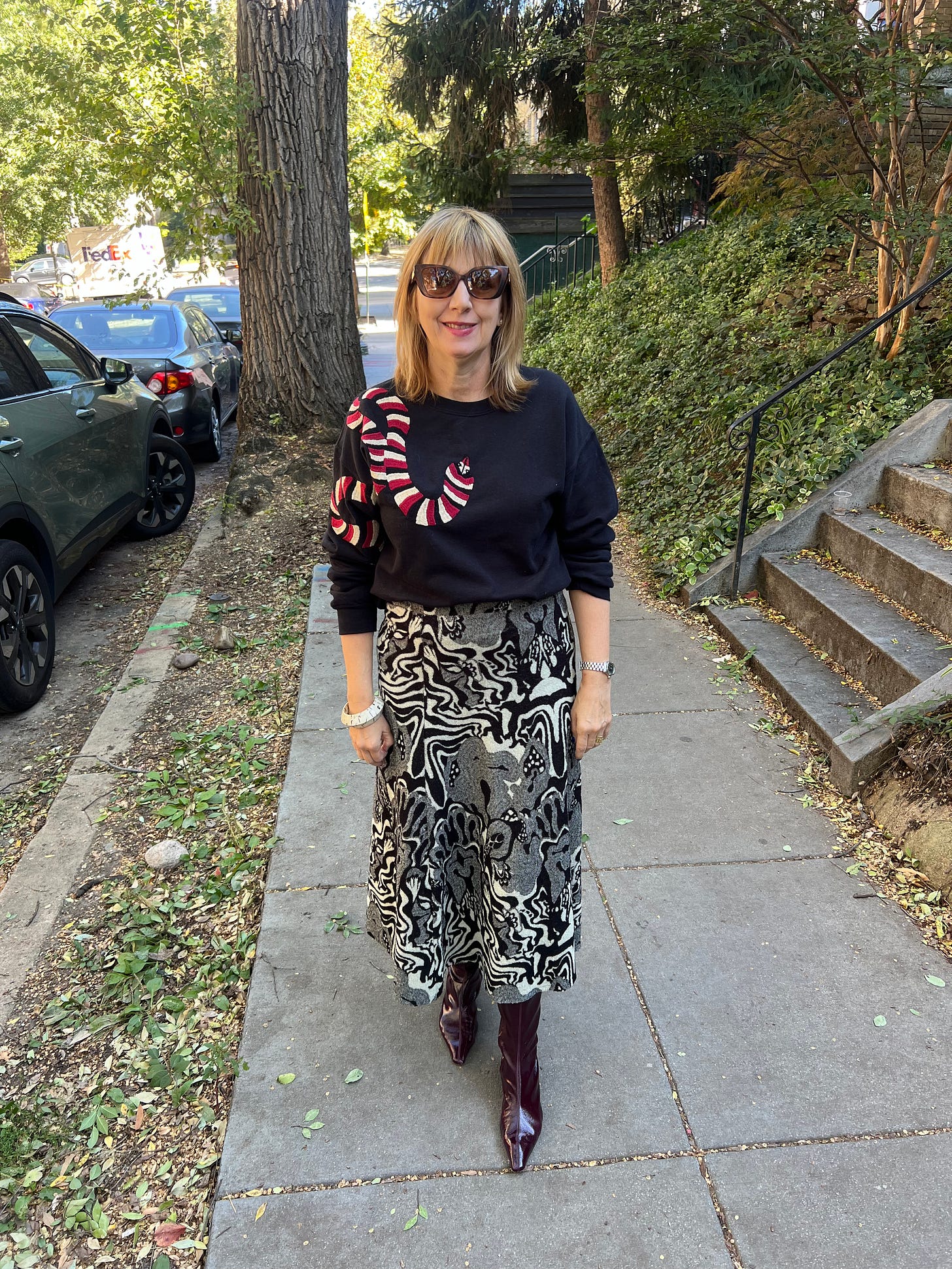
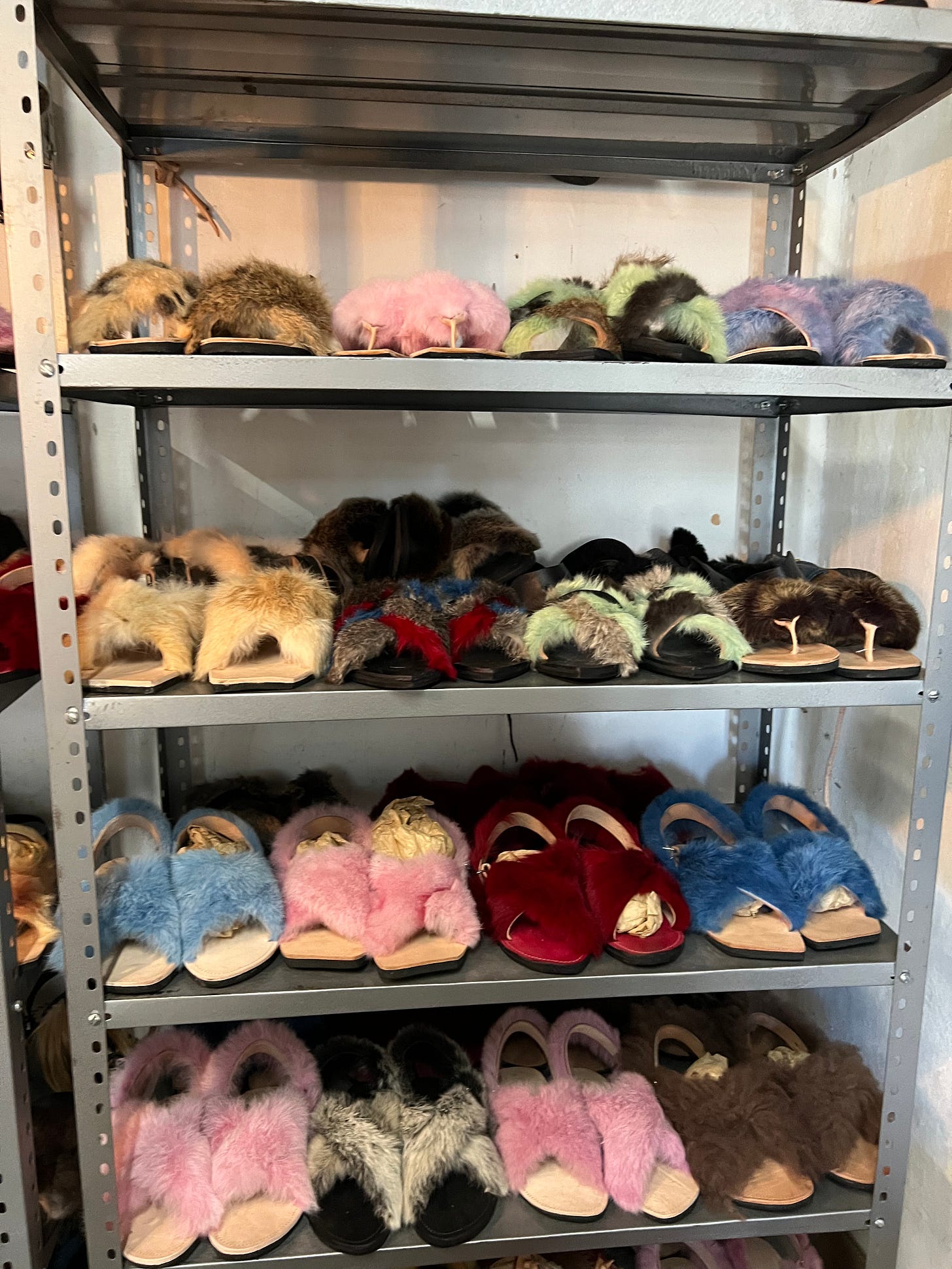
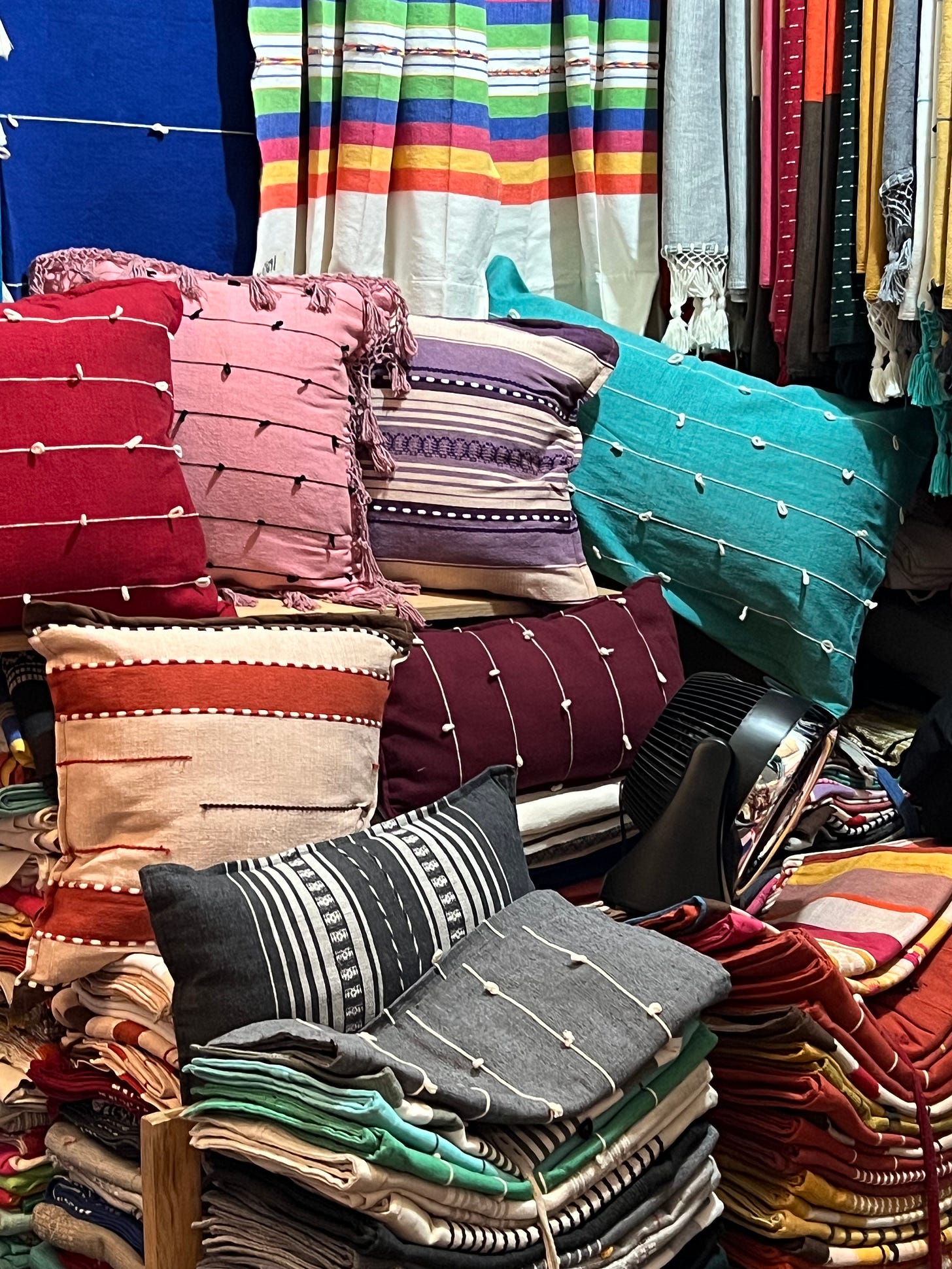
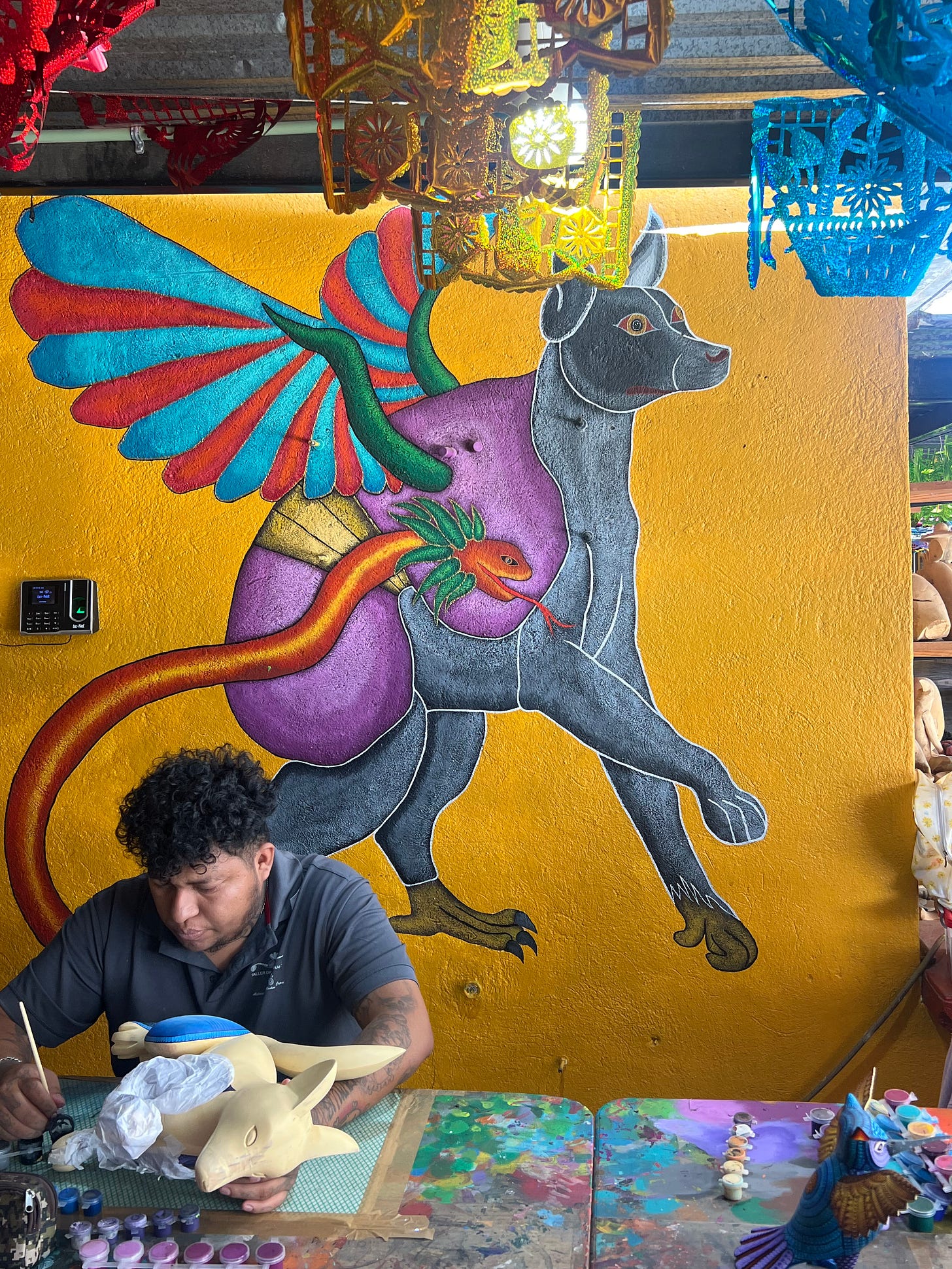
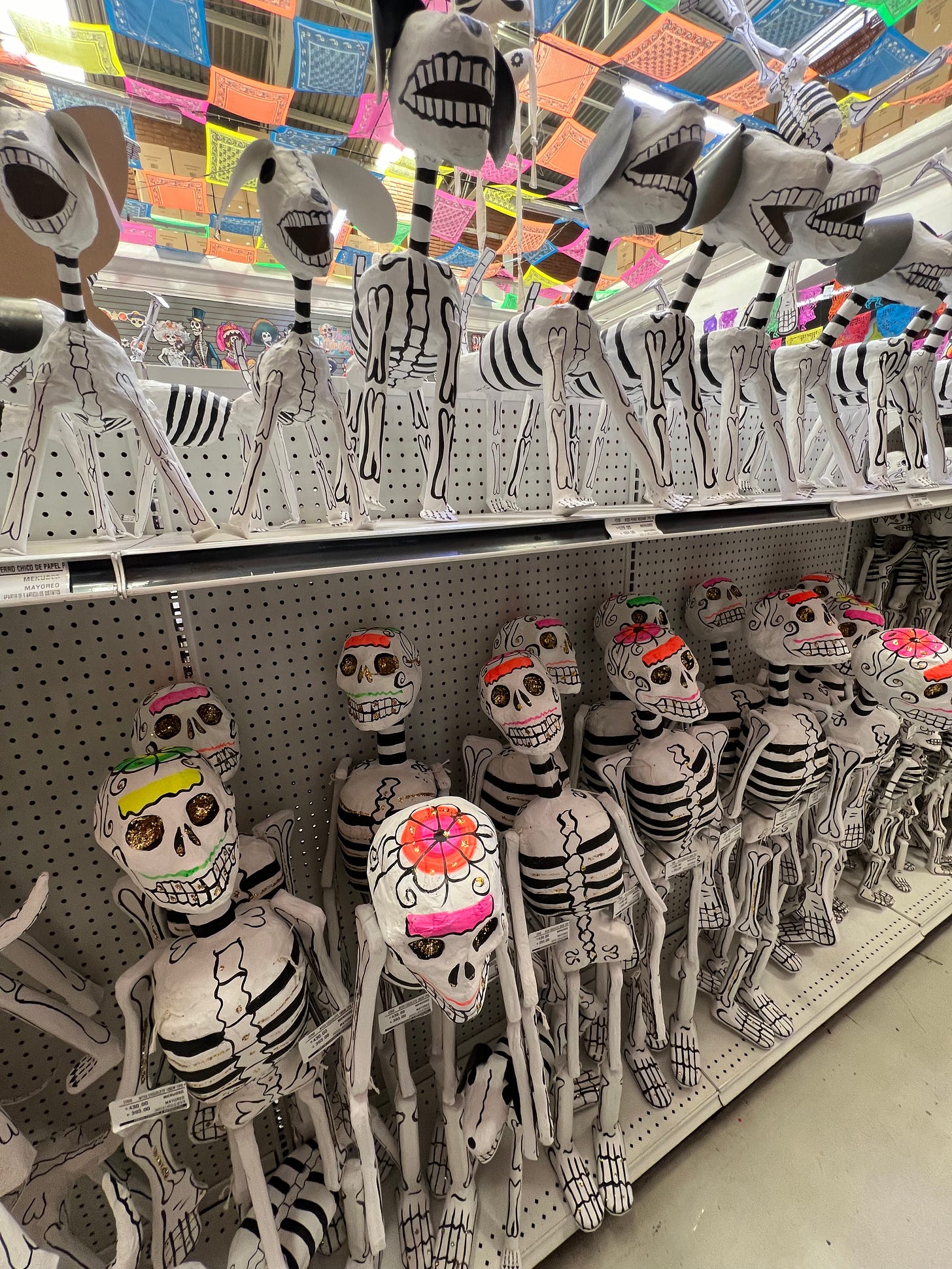
Love the Oaxaca sneakers!